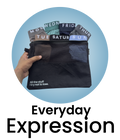Ever felt restricted by your athletic wear, hindering your performance instead of enhancing it? The pursuit of unrestricted movement in sports apparel has led to a surge in demand for 'second-skin' garments, exemplified by innovative fabrics seen in recent Olympic events and professional training programs. These advanced textiles promise a lightweight feel that moves with you, not against you. We'll explore the core technologies behind these seemingly invisible layers, examining the crucial role of fiber composition, knitting patterns. Finishing treatments in achieving that barely-there sensation. Get ready to delve into the science that makes "Underskin" a game-changer.

Understanding the Core Principles: Lightweight and Second-Skin
The concepts of "lightweight feel" and "second-skin fit" are central to the design and functionality of various products, particularly in the realms of apparel, wearable technology. Even adhesives. Achieving these qualities hinges on a careful balance of material science, engineering. Ergonomics. Lightweight Feel: This refers to the minimization of weight without sacrificing performance or durability. It's about creating a product that feels barely there, allowing for unrestricted movement and comfort. Second-Skin Fit: This aims for a close, conforming fit that mimics the natural contours of the body. The goal is to create a seamless integration between the product and the user, eliminating bulk and maximizing comfort.
The Science Behind the Feel: Materials and Construction
The selection of materials is paramount in achieving both a lightweight feel and a second-skin fit. Advanced materials and innovative construction techniques are often employed. * Lightweight Materials: Common materials include:
- Microfibers: These synthetic fabrics are incredibly fine and lightweight, offering excellent breathability and moisture-wicking properties.
- Engineered Knits: Special knitting techniques can create fabrics with varying degrees of stretch, support. Breathability, allowing for a customized fit.
- Thin Films and Foams: In applications like adhesives or protective layers, ultra-thin films and foams can provide necessary functionality without adding significant weight or bulk.
- Composites: Materials like carbon fiber or graphene can be used in applications where high strength-to-weight ratio is crucial.
* Construction Techniques:
- Seamless Construction: Eliminating seams reduces bulk and friction, contributing to a more comfortable and conforming fit.
- Bonded Construction: Adhesives can be used to join materials, eliminating the need for bulky stitching and creating a smoother profile.
- Zonal Compression: Strategically placed compression zones can provide support and enhance performance while maintaining a lightweight feel.
- Laser Cutting: Allows for precise cuts and intricate designs, minimizing waste and enabling complex shaping.
Key Technologies Enabling Underskin Performance
Several technologies play a vital role in creating products that offer an underskin-like experience. These often involve advanced manufacturing processes and innovative material applications. 3D Printing/Additive Manufacturing: 3D printing allows for the creation of custom-fit products tailored to individual body shapes. This is particularly useful for creating personalized orthotics or prosthetics. Computer-Aided Design (CAD) and Simulation: CAD software enables designers to create and refine designs with precision, while simulation tools allow them to test the performance of materials and constructions before physical prototypes are even made. Smart Textiles: These fabrics incorporate sensors, actuators. Other electronic components, enabling them to monitor physiological data or provide active support. Bio-inspired Design: Nature often provides inspiration for innovative designs. For example, the structure of gecko feet has inspired the development of advanced adhesives.
Comparing Approaches: Compression vs. Conforming Fit
While both compression garments and conforming fits aim for a close-to-the-body feel, they achieve this in different ways.
| Feature | Compression Garments | Conforming Fit |
|---|---|---|
| Mechanism | Applies pressure to the body | Molds to the body's shape |
| Purpose | Improve blood circulation, reduce muscle fatigue | Minimize bulk, maximize comfort |
| Feel | Tight and supportive | Snug and seamless |
| Applications | Athletic wear, medical support | Underwear, base layers, adhesives |
Compression garments actively squeeze the body, providing support and improving blood flow. Conforming fits, on the other hand, rely on the elasticity and shape-memory properties of materials to mold to the body's contours without applying significant pressure. In some cases, these two approaches are combined to achieve a synergistic effect. You can find more data about garment technology at example. Com.
Real-World Applications and Use Cases
The principles of lightweight feel and second-skin fit are applied across a wide range of industries and applications. Athletic Apparel: Base layers, compression shorts. Other athletic wear are designed to provide support, reduce friction. Enhance performance while feeling barely there. Wearable Technology: Smartwatches, fitness trackers. Other wearable devices must be comfortable and unobtrusive to be worn for extended periods. Lightweight materials and conforming designs are essential. Medical Devices: Prosthetics, orthotics. Wound dressings benefit from lightweight and conforming designs that promote comfort and healing. Adhesives: Medical adhesives, bandages. Even industrial adhesives are often designed to conform to irregular surfaces and provide a secure bond without adding significant bulk. * Underwear: Seamless construction and lightweight fabrics are used to create underwear that feels invisible under clothing.
Conclusion
Let's step into 'The Expert's Corner' and reflect on achieving that elusive "second-skin fit" with Underskin. We've explored the importance of lightweight materials and meticulous design. Remember that the true secret lies in understanding your own body. I've seen countless athletes chase trends instead of focusing on what truly complements their form and movement. A common pitfall is prioritizing compression over comfort – don't sacrifice performance for a restrictive feel. My best practice? Always test your Underskin gear during your actual activity, not just in front of a mirror. Feel the freedom, assess the breathability. Ensure it moves with you, not against you. Embrace the journey of finding your perfect fit. Remember that confidence in your gear translates directly into confidence in your performance. You've got this!
FAQs
Okay, so what exactly does 'Underskin' mean? What's the big deal?
Think of it like this: Underskin fabrics are designed to feel almost weightless and conform to your body like, well, a second skin. The goal is ultimate comfort and unrestricted movement. You might even forget you're wearing it!
How is 'lightweight feel' achieved? What's the secret sauce?
It's all about the fabric! Underskin usually uses super-fine, technically advanced materials. These fabrics are often knit in a way that creates tiny air pockets, making them breathable and feather-light. Plus, they're designed to wick away moisture, keeping you dry and comfortable.
Is 'second-skin fit' just a fancy way of saying 'tight'?
Not necessarily! While Underskin garments are form-fitting, they shouldn't be restrictive. The fabrics have a good amount of stretch and are designed to move with you, not against you. The aim is a close, comfortable fit, not a squeezed-in feeling.
What kind of activities are Underskin clothes good for?
Pretty much anything! Because it's so comfortable and breathable, Underskin is great for workouts (yoga, running, gym), layering under other clothes for extra warmth, or even just lounging around the house. It's versatile!
Will it show every lump and bump?
That's a valid concern! The answer depends on the specific fabric and the color. Lighter colors and thinner fabrics might be more revealing. Look for darker colors and fabrics with slightly more structure or compression if you're worried about that.
How do I wash Underskin stuff to keep it feeling good?
Definitely check the care label. Generally, gentle machine washing in cold water and air drying are your best bet. Avoid high heat in the dryer as it can damage the fabric and affect the fit. No one wants a shrunken second skin!
Is it durable? Will it fall apart after a few washes?
High-quality Underskin fabrics are designed to be durable. Proper care is essential. Stick to the washing instructions. It should last you a good while. Consider it an investment in comfortable, high-performance clothing.





